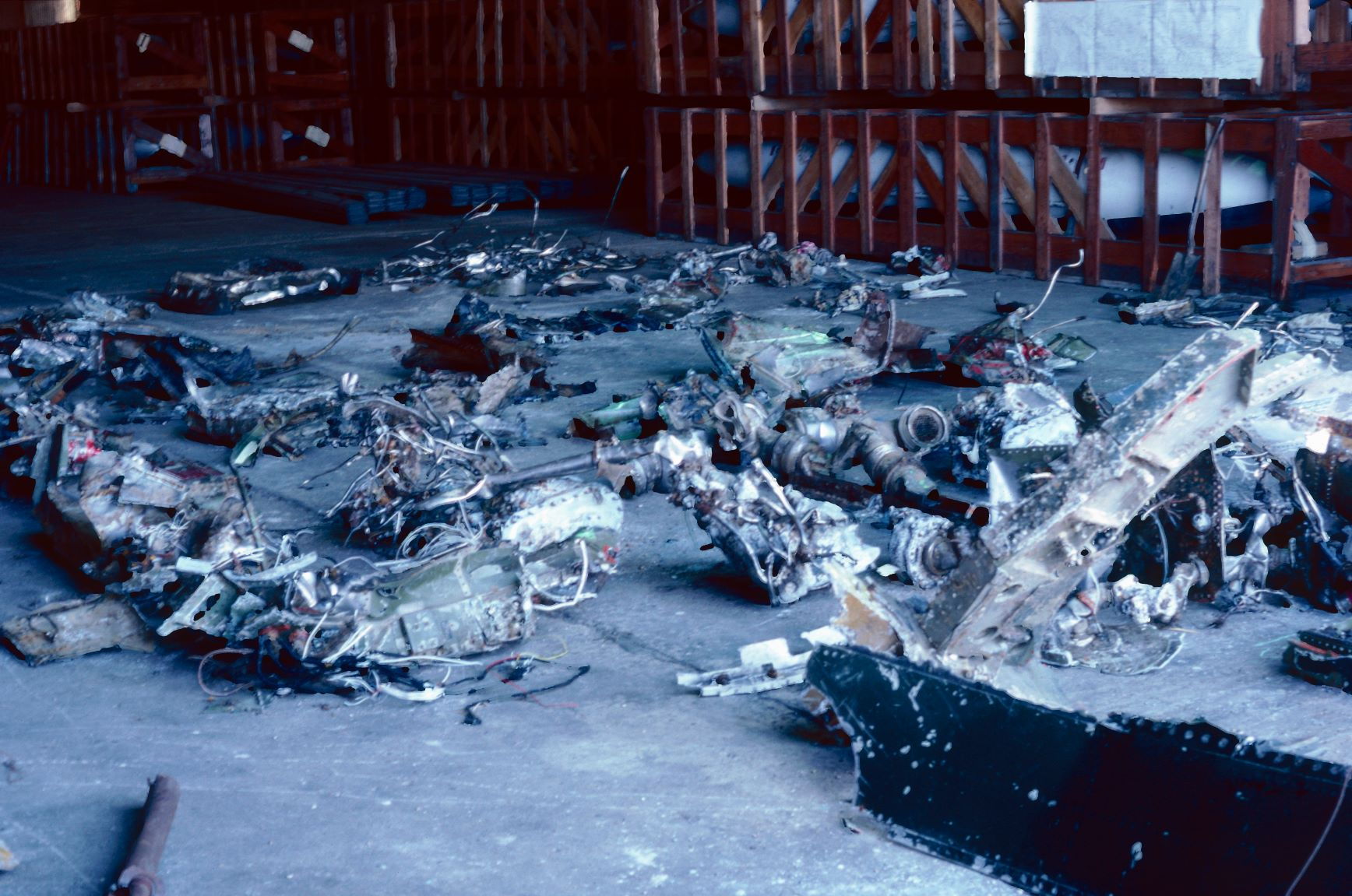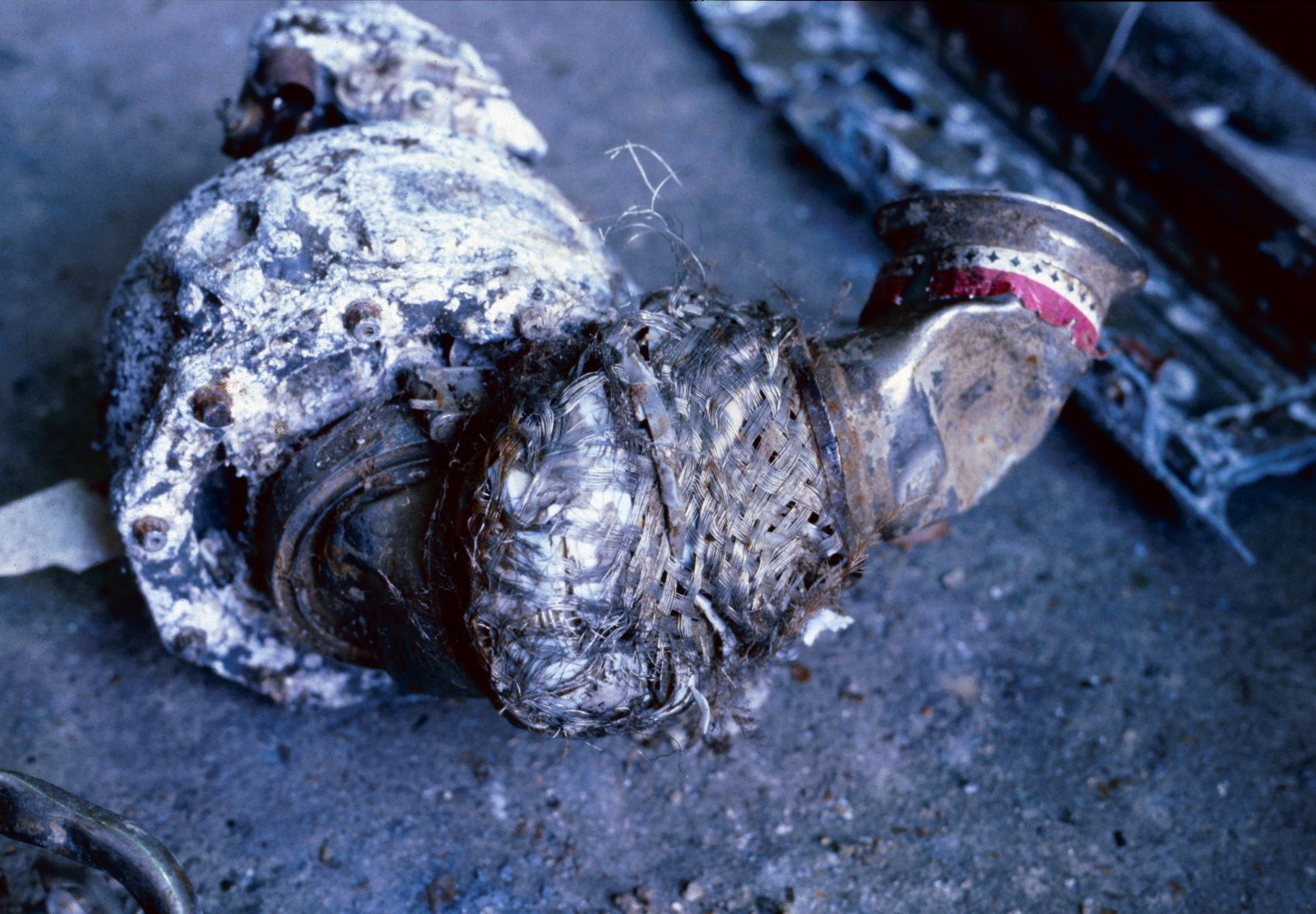Reading Post 668 above reminded me of another similar accident I was involved with in the same area. In December 1980 Phantom XV414 crashed about 10 miles north east of Great Yarmouth. The aircraft had been practicing interceptions at night with another Phantom when the crew noticed they had used more fuel than expected. They aborted the sortie and turned to return to Wattisham when the right engine fire warning illuminated and the navigator could see the reflection of a rear fuselage fire in the outer wing panel. The pilot shut down the RH engine but the LH engine fire warning caption then illuminated. The crew ejected and were successfully picked up by a search and rescue helicopter within 30 minutes The aircraft crashed into the sea about 200 yards from a lightship but despite an extensive search no significant wreckage could be found.
Flight Systems at BAe Brough were tasked with providing advice to the Board of Inquiry and we wrote a short report suggesting three possible causes of a major fuel leak and fire. The most probable, we thought was an engine bay fuel feed pipe had fractured or chafed. The bellows of the pipe connecting to the engine backing pump was particularly prone to damage due to chafing from the covering braiding and pressure pulsations in the system when reheat was selected. A second possibility was a fuel pipe on the engine had failed. One of the pipes, I can't remember which, was prone to fatigue failure if the engine was allowed to run out of fuel. The third possibility was a fuselage bag tank failure but we thought this was the least likely as we would have expected it to be progressive and picked up early as a result of fuel leaking from the tank bay drains. The report went off to the B of I and we heard no more for several months.
About 7 months later a local fisherman located the wreckage and, rumour had it, approached MoD and said you give me £X000 and I will give you back the remains of your aircraft. A fair proportion of the wreckage was recovered and dumped in a hangar at RAF Wattisham. I was advised by my boss at the time that an RAF engineering officer was convinced the cause of the accident was a fuselage tank failure. I seem to remember the RAF engineer was called Bob Jones but I can't remember his rank and I never met him. I was asked to go down to Wattisham and have a look at the remains of the aircraft and spent a couple of weeks in the hangar trying to piece together a picture of what happened. I had never done anything like this before but I basically drew out a chalk centreline down the hangar floor, marked out fuselage stations and buttock lines and started looking for bits in the centre and rear fuselage and laying them out in the approximately correct locations. The local BAe rep, who I think would have been Jock Shepherd provided assistance with access to tech pubs and drawings A pretty clear picture emerged in that there were no signs of fire around the front of the engine bay where the suspect feed pipes were placed. However there was clear evidence of a fire in the vented compartment under the tank floors and above the engine bay. I can't remember where the fire appeared to have started but it was probably under tanks 5 or 6. It looked like Bob Jones, if that was his name, was correct. The tank sidewall had probably cracked as a result of fatigue induced by pressure variations in the tank, this had cut or chafed through the rubber bag tank and fuel had leaked in large quantities down into the engine bay. The vented cavity under the tank floors should have been sealed to prevent fuel leaking down this path but it looked like it had found a way through and been ignited by a hot surface on the engine or possibly use of reheat.
Subsequently a mod programme was introduced to fit a liner in the tank bays to protect the bag tanks in the event of cracks developing in the tank structure.
One of the engines in the hangar stank to high heaven as a result of a large crab which had died, lodged up against the front of the LP compressor. I have another souvenir of the incident, although I cant put my hands on it at present. I had to take a colour blindness test to be permitted to drive on the airfield. This was successful and I was presented with a chit, by a probably dyslexic RAF corporal, that said Gareth Jones of British Earospace is approved to drive on Wattisham airfield. I also still have the photos, a selection of which are shown below. I never found out how much the fisherman was paid.
Walbut



